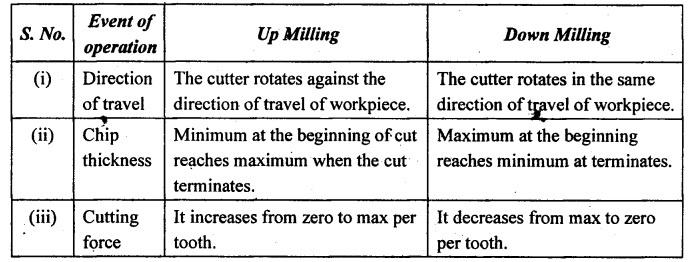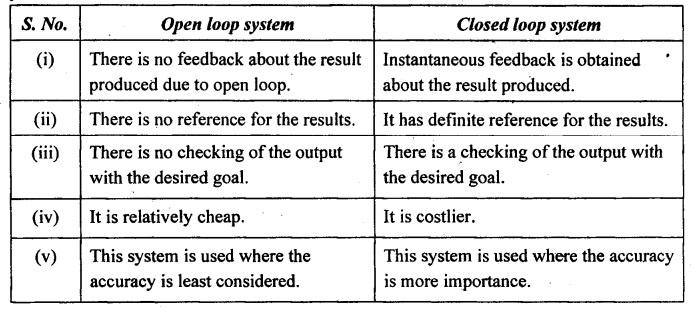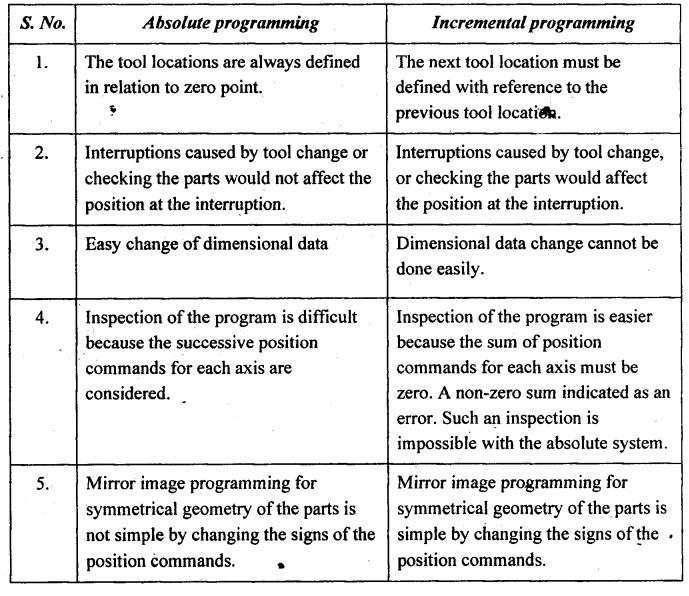Manufacturing Technology: Solved Model Question Papers
B.E./B.TECH. degree examination, model question paper-2
Solved Model Question Papers - Manufacturing Technology
B.E./B.TECH. degree examination, model question paper-2: Solved Model Question Papers - Manufacturing Technology
B.E./B.TECH. DEGREE EXAMINATION, MODEL QUESTION PAPER -2 Time: Three hours Fourth Semester Mechanical Engineering ME 3493 - MANUFACTURING TECHNOLOGY (Regulation 2021) Answer ALL questions Maximum: 100 marks Part A - (10×2 = 20 Marks) 1. List the physical functions of a machine tool in machining. A machine tool is a machine for shaping, machining metal or other rigid materials by cutting, boring, grinding, shearing or other forms of deformation. Machine tools employ some sort of tool that does the cutting or shaping. All machine tools have some forms of constraining the workpiece and provide a guided movement of the parts of the machine. 2. Name and briefly describe the four types of chips that occur in metal cutting operations. (a) Continuous chip (b) Discontinuous chip (c) Continuous chip with build-up edge. (i) Continuous chip: During cutting of ductile material, a continuous ribbon-like chip is produced due to pressure of the tool cutting edge in compression and shear. These types of chips are in the form of a long coil and have the same thickness throughout the length. (ii) Discontinuous or segmental chip: Discontinuous chips are produced while machining brittle materials such as grey cast iron, bronze, high carbon steel at low cutting speeds without fluid when the friction exists between tool and chip interface. (iii) Continuous chip with built-up edge: During cutting process, the interface temperature and pressure are quite high and also high friction between tool-chip interface. It causes the chip material to weld itself to the tool face near the nose is called "built-up edge". 3. How is turret lathe classified? There are two principal types of turret lathes: 1. Ram type 2. Saddle type. 4. Name the methods of taper turning on lathe. (a) Form tool method (b) Tailstock set over method (c) Compound rest method (d) Taper turning attachment method. 5. Name any four work holding devices in shaper. (a) Vice (b) Table (c) V-block (d) Angle plate and (e) Fixture. 6. Explain the relative characteristics of up milling and down milling process of material removal. 7. Brief on the term Numerical control. Numerical control (NC) refers to a form of programmable automation in which the mechanical actions of a machine tool or other equipment are controlled by a program containing coded alphanumeric data encoded on a storage medium. NC machine tools are the machine tools operated by programmed commands in contrast to the manual control through hand wheels or levers, or mechanically automated through cams alone. 8. What is the difference between a closed-loop control system and an open-loop control system? 9. Write the disadvantages of manual part programming. (i) Time required is more to actually develop a fully functioning CNC program such as manual calculations, verifications and related activities. (ii) There is a chance of large percentage of errors, a lack of tool path verification and difficulty in making changes in a part program. 10. What is the difference between absolute and incremental programming? Part B - (5 × 13 = 65 Marks) 11.(a) (i) The following data from an orthogonal cutting test is available. (a) Rake angle = 15° (b) Chip thickness ratio = 0.383 (c) Uncut chip thickness = 0.5 mm (d) Width of cut, B = 3 mm (e) Yield stress of material in shear = 280 N/mm2 Average coefficient of friction on the tool face = 0.7 Determine the normal and tangential forces on the tool face. Same as Problem 1.16 on Page 1.50. (ii) Draw the schematic diagram illustrating the characteristics of Built-up-Edge (BUF) formation in the machining process. Refer chapter 1.12.3 on Page 1.20. Or (b) Describe the following: (i) Mechanisms and pattern (geometry) of cutting tool wear. Refer chapter 1.29.1 on Page 1.66. (ii) Essential properties of cutting fluids. Refer chapter 1.35.2 on Page 1.91. 12.(a) (i) What is the profile of the threads in the lead screw in a central lathe? Justify your answer. Refer Page 2.38. (ii) A high-strength cast-iron bar 200 mm in diameter is being turned on a lathe at a depth of cut d = 1.25 mm. The specific power required to machine cast iron is 3.3 W.s/mm3. The lathe is equipped with a 12 kW electric motor and has a mechanical efficiency of 80%. The spindle speed is 500 rpm. Estimate the maximum feed that can be used before the lathe begins to stall. Same as AU Problem 2.5 on Page 2.64. Or (b) (i) A 150 mm long, 12.5 mm diameter 304 stainless steel rod is being reduced in diameter to 12.0 mm by turning on a lathe. The spindle rotates at N = 400 rpm, and the tool is travelling at an axial speed of 200 mm/min. Calculate the cutting speed, material removal rate, cutting time, power dissipated and cutting force. Same as AU Problem 2.6 on Page 2.64. (ii) Explain the significance of operations facing and turning performed in the lathe with reference to the change in the geometry of the workpiece. Refer chapter 2.9.2 on Page 2.24 for turning and chapter 2.9.4 on Page 2.26. 13.(a) With the help of a neat sketch explain a Vertical milling machine. Refer Page 3.89. Or (b) Describe a gear hobbing machine with a neat sketch. Refer chapter 3.8.22.3 on Page 3.149. 14.(a) (i) Narrate the design considerations of CNC machines. Refer chapter 4.3.6 on Page 4.24. (ii) With a neat sketch, explain the construction of horizontalşpindle machining centre. Refer chapter 4.16.1.1 on Page 4.81. Or (b) (i) Discuss about the closed loop system and open loop system with a neat sketch and with suitable example. Refer chapters 4.4.1 & 4.4.2 on Pages 4.33 & 4.34 respectively. (ii) Compare machining centre and turning centre. Refer chapter 4.16.2 on Page 4.83. 15.(a) Explain the following with respect to manual part programming: (1) M codes and G codes Refer chapters 5.5 & 5.6 on Pages 5.11 & 5.15 respectively. (2) Program sheet Refer chapters 5. 8 on Page 5.18. (3) Canned cycle Refer chapter 5.12 on Page 5.85. (4) Coordinate system. Refer chapter 51 on Page 5.1. Or (b) A series of 5 mm hole (total number = 6) are to be drilled in a circle of 150 mm diameter on a 6 mm glass sheet. Describe the method of manufacture to be used with a neat sketch of the setup. What are the process variables to be controlled giving their effect on the final hole quality and the production rate? Same as AU Problem 5.9 on Page 5.82. Part C - (1 x 15 = 15 Marks) 16. (a) (i) What is useful life of a tool? What are the factors affecting the tool life? How these factors are related in Taylor's tool life equation? Refer chapter 1.24 on Page 1.64. (ii) Describe any two gear finishing operations based on plastic deformation. Refer chapter 3.7.1-3.7.6 on Page 3.126-3.136. Or (b) (i) In a face-milling operation, the workpiece dimensions are 100 mm by 250 mm. The cutter is 150 mm diameter, has eight teeth, and rotates at 300 rpm. The depth of cut is 3 mm and the feed is 0.125 mm/tooth. Assume that the specific energy requirement for this material is 5 Ws/mm3 and that only 75% of the cutter diameter is engaged during cutting. Calculate (1) the power required and (2) the material removal rate. Same as AU Proem 3.2 on Page 3.140. (ii) Explain the working principles of gear shaving process. Refer chapter 3.8.24.1 on Page 3.153.


Manufacturing Technology: Solved Model Question Papers : Tag: : Solved Model Question Papers - Manufacturing Technology - B.E./B.TECH. degree examination, model question paper-2